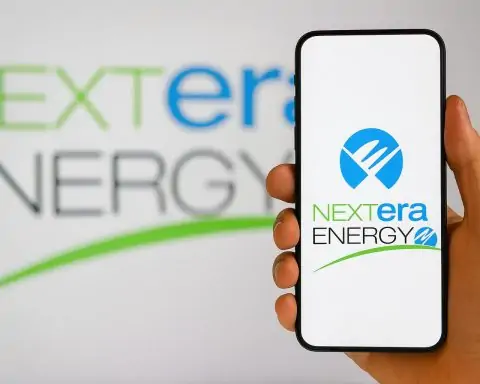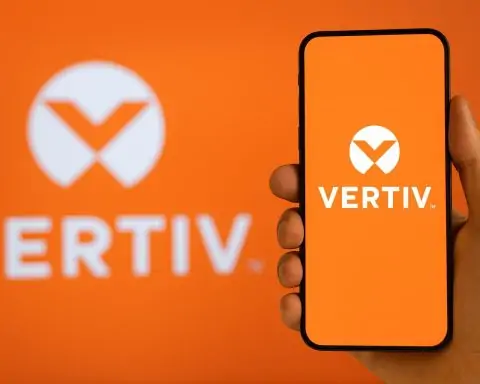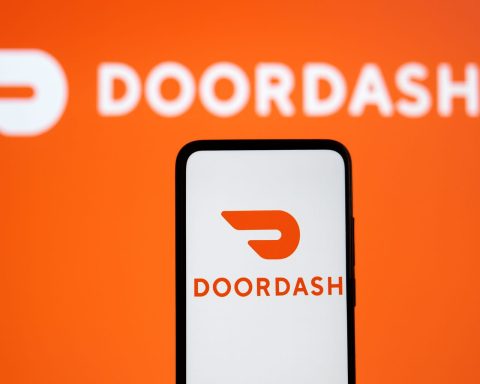- March 2021: EleutherAI released GPT-Neo at 2.7 billion parameters, the first free open alternative to GPT-3, under the MIT license.
- June 2021: EleutherAI released GPT-J at 6 billion parameters under the Apache 2.0 license, boosting startups in open GPT development.
- July 2022: The BigScience project released BLOOM at 176 billion parameters, covering 46 languages and released under the Responsible AI License.
- May 2022: Meta AI released OPT at 175 billion parameters under a non-commercial research license, including a logbook documenting the training process.
- February 2023: Meta AI unveiled LLaMA with 7B, 13B, 33B, and 65B models, and the weights leaked online, catalyzing derivatives like Alpaca and Vicuna.
- July 2023: Meta released LLaMA 2, spanning 7B–70B parameters under a community license that allows commercial use, with the 70B model hitting 68.7% on MMLU.
- Spring 2023: The Technology Innovation Institute released Falcon-40B (and a 7B variant) under Apache 2.0, introducing RefinedWeb data and multi-query attention for faster inference.
- September 2023: Mistral launched Mistral 7B (7.3B parameters), outperforming LLaMA-13B on many benchmarks through architectural innovations like sliding window attention.
- Late 2023: Falcon-180B, at 180B parameters and trained on 3.5 trillion tokens, achieved state-of-the-art results and remained openly usable for commercial purposes with some API restrictions in the license.
- April 2024: Meta released LLaMA 3 with 8B and 70B models featuring an improved tokenizer and 8K context, and in late 2024 introduced LLaMA 3.1 with a 405B parameter model claimed to outperform GPT-4 on several benchmarks (pending external verification).
Introduction: Open-Source GPT vs. Proprietary AI
Open-source GPT models are large language models whose code and weights are publicly available, allowing anyone to use, modify, and improve them. This openness contrasts with proprietary models like OpenAI’s GPT-4, whose inner workings and training data are closely guarded secrets. In practical terms, an open-source GPT means researchers and developers can download the model’s parameters, run it on their own hardware, fine-tune it on custom data, or even deploy it in products without relying on a third-party API [1] [2]. By comparison, proprietary models (e.g. GPT-4 or Google’s PaLM and Gemini) are typically accessible only via paid services or restricted licenses, and users cannot see or alter the model’s weights.
This distinction has huge implications. Open-source GPT models (often called open LLMs) embody a community-driven approach – much like Linux in the operating system world – whereas proprietary models are more like closed commercial software. Early on, closed models like GPT-3 and GPT-4 enjoyed a quality edge, but open models have rapidly closed the gap. A leaked Google memo in 2023 famously warned: “We aren’t positioned to win this arms race… I’m talking, of course, about open source. Plainly put, they are lapping us.” [3] The momentum behind open-source AI is now undeniable – in the past two years, community-built GPT-style models have evolved from niche projects to frontier-level systems rivaling the best from tech giants. As Meta’s CEO Mark Zuckerberg observed, “In 2023, open models trailed the leaders, but this year, Llama 3 is competitive with the most advanced models and leading in some areas.” [4]
In this report, we’ll explore the world of GPT-related open-source projects and initiatives – what they are, how they came to be, and why they matter. We’ll look at the key model releases over time, major players in the open AI ecosystem, technical capabilities and benchmarks, recent developments, legal/licensing issues, business adoption, and the ethical considerations unique to open-source AI. Notable voices from the AI community will also weigh in along the way.
From GPT-Neo to LLaMA: A Timeline of Open-Source GPT Models
The journey of open-source GPT models began as a grassroots effort to democratize AI, and has accelerated rapidly. Below is a chronological overview of milestone projects that have defined the open-source LLM landscape:
- March 2021 – GPT-Neo: EleutherAI, a volunteer research collective, released GPT-Neo (2.7 billion parameters) as the first free and open alternative to GPT-3 [5]. Though smaller than GPT-3, GPT-Neo proved that a small team could reproduce a GPT-style model and even outperform a similar-sized GPT-3 on some benchmarks [6]. It was open-sourced under an MIT license.
- June 2021 – GPT-J: EleutherAI followed up with GPT-J (6 billion parameters), a more powerful GPT-3-like model. GPT-J’s Apache 2.0 license and improved performance “fueled a new wave of startups” building on its text generation abilities [7] [8].
- February 2022 – GPT-NeoX-20B: Pushing further, EleutherAI released GPT-NeoX-20B, a 20-billion-parameter transformer that was then the largest openly available model [9]. GPT-NeoX matched or exceeded GPT-3’s smaller variants on some tasks [10], proving that open models could achieve near state-of-the-art results. EleutherAI also open-sourced the training code (the NeoX library built on Megatron-LM/DeepSpeed) to help others learn how to train large models [11] [12].
- Mid 2022 – BigScience BLOOM & Meta OPT: The open-source movement went truly large-scale in 2022. An international research collaboration led by Hugging Face (the BigScience project) released BLOOM (176 billion parameters) in July 2022 [13]. BLOOM was a multilingual model covering 46 languages, trained with the contributions of hundreds of researchers worldwide. It was released under a Responsible AI License (RAIL) that made the model open-access but with usage restrictions to prevent misuse [14]. Meanwhile, in May 2022 Meta AI open-sourced OPT (175B), a GPT-3-scale model, under a non-commercial research license [15]. OPT’s release included an unprecedented logbook documenting the entire training process to aid transparency [16].
- Early 2023 – LLaMA 1 and the Leak: A pivotal moment came in February 2023 when Meta AI unveiled LLaMA (Large Language Model Meta AI). LLaMA was a family of models (7B, 13B, 33B, and 65B parameters) released under a restricted research license [17]. Despite the license, the weights leaked online, and researchers around the world seized the opportunity to experiment. LLaMA’s impact was huge: it showed that a 13B open model could outperform the 175B GPT-3 on most benchmarks [18], thanks to architectural optimizations. This leap in efficiency proved that open models didn’t need hundreds of billions of parameters to be competitive. LLaMA’s leak also ignited a flurry of derivative projects – from fine-tuned chatbots (Stanford’s Alpaca, Vicuna, etc.) to distillations – truly kickstarting the mass adoption of open LLMs in 2023.
- Mid 2023 – Falcon and StableLM: In Spring 2023, more entrants arrived. The Technology Innovation Institute (TII) in the UAE released Falcon-40B (and a smaller 7B) under an Apache 2.0 license, immediately topping many leaderboards for open models [19] [20]. Falcon introduced novel training data (the RefinedWeb dataset) and architectural tweaks like multi-query attention for faster inference [21]. Around the same time, Stability AI (known for Stable Diffusion) backed the release of StableLM (open language models up to 7B) and helped fine-tune models like StableVicuna-13B (an RLHF-tuned chatbot based on LLaMA) [22]. These efforts further enriched the pool of open models available to developers.
- July 2023 – LLaMA 2: Meta doubled down on openness with LLaMA 2, announced in July 2023 as a successor to LLaMA. Ranging from 7B to 70B parameters, LLaMA 2 was made available for both research and commercial use under a special community license [23] [24]. This was a landmark: a tech giant released a state-of-the-art model freely (with a few strings attached, like requiring special permission if an application has over 700 million users) [25]. LLaMA 2’s 70B model reached 68.7% on the MMLU academic benchmark, nearly matching OpenAI’s GPT-3.5, despite using far fewer parameters [26] [27]. It also introduced features like Grouped-Query Attention (GQA) for better scaling and was trained on a massive 2 trillion tokens [28] [29].
- Late 2023 – Mistral 7B and Falcon 180B: By late 2023, the open-source lineup covered both extremes: small efficient models and giant “GPT-4-sized” ones. In September 2023, French startup Mistral AI launched Mistral 7B (7.3B params) under Apache 2.0, which outperformed Meta’s LLaMA-2 13B on every benchmark tested [30]. In fact, Mistral 7B even beat the original LLaMA-1 34B model on many tasks [31], thanks to clever enhancements like sliding window attention for 16k+ context length and other training innovations [32]. On the other end, TII upped the ante with Falcon-180B (180B params) in late 2023, the largest open-access model to date. Falcon 180B was trained on 3.5 trillion tokens, achieving state-of-the-art results across many benchmarks – essentially matching Google’s much-touted PaLM-2 Large (a closed model) in performance [33] [34]. Evaluations placed Falcon 180B’s quality between GPT-3.5 and GPT-4 on various tasks [35]. Like its 40B predecessor, Falcon 180B was open for commercial use, though its license forbids turning it into a public API service without permission [36].
- 2024 – LLaMA 3 and Beyond: The rapid evolution continued into 2024. Meta released LLaMA 3 in April 2024, initially with 8B and 70B models that introduced an improved tokenizer, extended context window (8K tokens), and further GQA refinements [37] [38]. LLaMA 3 models outperformed other open models of similar sizes, with the 8B often beating previous-gen 13B models in benchmarks [39]. Then in late 2024, Meta unveiled LLaMA 3.1 – including a colossal 405 billion parameter model [40]. This 405B LLaMA 3.1 is one of the largest models ever made public, and Meta claimed it “outperforms GPT-4.0 and Anthropic’s Claude 3.5 on several benchmarks” (though external verification was pending) [41]. Whether or not it truly rivals GPT-4, LLaMA 3.1 undeniably pushed open models to frontier-scale. By mid-2024, open projects had also embraced mixture-of-experts architectures (e.g. Mistral released MoE models up to ~140B effective parameters) and specialized models like StarCoder 15B (for code) [42], reflecting a diversified ecosystem.
- 2025 – The Trend Continues: In 2025, open-source GPT development shows no signs of slowing. New entrants like OpenLM (OLMo) from AI2 aim for even greater transparency by releasing everything (model, code, data, and intermediate checkpoints) under Apache license [43] [44]. Established players are iterating fast – for example, Mistral’s early 2025 models have improved on their 7B debut, and other organizations worldwide (from Alibaba’s Qwen models to NVIDIA’s research LLMs) are contributing to the open pool. Hugging Face’s Open LLM Leaderboard now counts dozens of open models that approach or exceed the performance of proprietary systems on standard tests [45] [46]. In short, the open-source GPT timeline from 2021 to 2025 is one of exponential progress, going from a 2.7B model struggling to match GPT-3, to now 100B+ parameter models that in some cases surpass earlier generation proprietary AIs [47].
The Players: Communities and Organizations Powering Open GPT
Several key organizations and communities have been instrumental in the rise of open-source GPT models:
- EleutherAI – The Pioneers: EleutherAI is often credited as the catalyst of the open LLM movement. Formed in 2020 as a Discord community of volunteer researchers, their initial mission was to reproduce OpenAI’s GPT-3. In pursuit of this, EleutherAI created “The Pile”, an 825 GB open text dataset from diverse sources (from Wikipedia to PubMed to GitHub) that became a standard training set for many models [48] [49]. They then delivered a series of breakthrough models (GPT-Neo, GPT-J, GPT-NeoX) and even a suite of transparent research models (Pythia in 2023) with all training logs and checkpoints released for study [50]. Eleuther’s work proved that relatively small teams could produce high-quality GPT-like models outside of big tech. Equally important was their ethos: EleutherAI emphasized research transparency and AI ethics, openly discussing model biases and alignment challenges [51] [52]. By 2023, EleutherAI transitioned into a non-profit institute and decided to focus more on alignment and interpretability rather than just scaling up models, noting that by then “there is substantially more interest in training and releasing LLMs than there once was” [53] [54] – a nod to the flourishing open-model community they helped spawn. Many EleutherAI members went on to influence other projects: some joined Hugging Face and steered the BigScience effort, others joined Stability AI, and some founded new ventures like Together AI [55]. Even skeptics of open AI have praised EleutherAI’s transparency; the prominent critic Gary Marcus lauded Eleuther as a needed foil to secretive corporate labs [56].
- Hugging Face – The Hub of Open AI: If Eleuther provided the spark, Hugging Face provided much of the infrastructure and fuel for the open-source LLM revolution. Often described as the “GitHub of machine learning,” Hugging Face runs the Model Hub where anyone can share models and datasets. As of 2025, the Hub hosts over 100,000 models, including essentially all the open LLMs (LLaMA, Falcon, Mistral, etc.) [57] [58]. Hugging Face’s tools have lowered the barrier to entry for using these models – the Transformers library lets developers invoke a pre-trained GPT model in just a few lines of Python code [59] [60]. The company also maintains leaderboards and evaluation benchmarks that rank open models’ performance, spurring friendly competition (Falcon-180B sat atop the Open LLM leaderboard upon its release) [61] [62]. Hugging Face has actively partnered with others to proliferate open models: they worked with Meta to distribute LLaMA 2 and 3’s weights (which have been downloaded hundreds of millions of times) [63], and with ServiceNow to release StarCoder for code generation [64]. CEO Clément Delangue is a vocal advocate for AI openness, calling it crucial for progress and a “community good” [65]. Hugging Face also bridges open models into industry – partnering with cloud providers like AWS and Azure to offer one-click deployment of models or even enterprise support contracts for open-source LLMs [66]. In Delangue’s view, openness in AI isn’t just altruism; it accelerates innovation by enabling anyone to build on the latest advances, as demonstrated when Hugging Face engineers replicated an OpenAI proprietary feature within a day in 2024 [67] [68]. This “crowdsourced innovation” keeps pressure on the closed giants to move faster [69].
- Meta (Facebook) – Big Tech Embraces (Partial) Openness: Meta’s AI lab (formerly FAIR) has emerged as an unexpected champion of open access. By releasing the LLaMA series (65B in 2023, then LLaMA 2, 3, etc.), Meta provided the most powerful open models to date. Importantly, Meta’s releases come with code, model weights, and research papers detailing architecture tweaks – but under custom licenses. For example, LLaMA 2’s license allows free use and even commercial products, yet with a clause requiring a special agreement if the app serves more than 700 million users [70]. This isn’t “open source” by the strict OSI definition, but the weights are fully available to download [71]. Meta’s approach has been described as “open-ish,” balancing openness with some protective measures. Nonetheless, Meta’s contributions are highly significant: by training models on trillions of tokens using their vast compute (the Grand Teton supercomputer, in LLaMA 3’s case [72] [73]), and then sharing the weights, Meta essentially subsidizes the community. They also added responsible AI tools (e.g. LLaMA 3 included a “Code Shield” filter for insecure code output) [74] and model card documentation with transparency about training data. Meta’s motivation is partly strategic – by open-sourcing, they gain widespread adoption and community feedback. Indeed, within a week of LLaMA 3’s release, developers created 600+ derivatives and fine-tunes on Hugging Face [75] [76]. Meta’s chief AI scientist, Yann LeCun, argues that open models “have been critical in driving innovation and development” in AI [77] and regularly speaks about democratizing AI research. In effect, Meta has leveraged open-source as a way to set industry standards and perhaps blunt its competitors’ proprietary advantages.
- Stability AI and LAION – Generative AI for All: Stability AI made headlines by open-sourcing image generation (Stable Diffusion), and they have similarly supported open-source text models. Stability helped fund and compute CarperAI’s efforts to fine-tune models with Reinforcement Learning from Human Feedback (RLHF) – yielding StableVicuna, one of the first open chatbots tuned like ChatGPT [78]. They also released a small StableLM model and collaborated on StableCode (3B) for code generation [79]. Stability’s CEO Emad Mostaque often says his goal is to “spark the generative AI revolution” by open-sourcing powerful models across modalities [80]. In practice, Stability has acted as an enabler: providing funding and compute grants to projects like EleutherAI and LAION (a German non-profit) [81] [82]. LAION, for its part, built the dataset behind Stable Diffusion and also created OpenAssistant, a crowd-sourced open chatbot with its own 17B model released in early 2023. These organizations operate on the belief that AI should not be controlled by a few corporations – and they work to provide alternatives that anyone can run locally or customize.
- Others – BigScience, Academia, and New Startups: The ecosystem extends further. BigScience, the 2022 research collective behind BLOOM, demonstrated how academia and industry can collaborate on an open model at the scale of GPT-3. Beyond the model, BigScience contributed an ethics framework (they introduced the RAIL license and extensive model documentation) [83]. Non-profits like Allen Institute for AI (AI2) have launched the OLMo project (noted above) to push transparency even further [84] [85]. On the commercial side, many startups have sprung up around open LLMs: companies like MosaicML (now part of Databricks) released the MPT series of open models and provided tools for others to train models cheaply; Databricks itself created Dolly, an open instruction-tuned model for enterprises. Even xAI, the startup founded by Elon Musk in 2023, released a 34B-parameter model called Grok under an Apache-2.0 license [86]. The open-source wave is truly global – we see contributions from Huawei (PanGu models), Baidu, Alibaba (the Qwen series), and independent researcher communities on every continent. With Hugging Face’s community challenges and government-backed initiatives (for instance, the French government co-funded projects leading to models like BLOOM and Leandre), the development of GPT-style models is no longer confined to Silicon Valley.
Capabilities and Benchmarks: How Do Open Models Stack Up?
Open-source GPT models have made remarkable strides in technical capability, to the point that the best open models approach – and in some cases match or surpass – the performance of proprietary systems. Here are some key aspects of their capabilities and how they are evaluated:
- Size vs. Performance: One measure of a language model is its parameter count, but bigger isn’t always better if the model is well-designed and trained on quality data. A striking example: Meta’s open LLaMA-13B outperforms the original GPT-3 (175B) on most benchmarks [87]. This is possible due to training on more tokens and architectural improvements (LLaMA used richer data and techniques like rotary embeddings and better normalization [88]). Similarly, the compact Mistral-7B model beat larger 13B and even 34B open models on reasoning and coding tasks [89], thanks to innovations like grouped-query and sliding window attention enabling longer context and efficient training [90]. These cases show how open models have achieved greater efficiency, extracting more performance per parameter through research insights.
- Benchmark Leaderboards: The AI community tracks model prowess through benchmarks like MMLU (Massive Multitask Language Understanding), STEM and coding challenges, and more. By mid-2023, open models began populating the top of these leaderboards. For instance, Falcon-40B surpassed older 30B–65B models on many tasks [91] [92]. Falcon-180B later achieved ~68.8% on MMLU, similar to LLaMA-2 70B’s score [93] [94] – placing it just a notch below GPT-3.5’s performance. Some open instruct-tuned models have even approached ChatGPT’s capability in conversation: the Vicuna-13B chatbot (fine-tuned from LLaMA) reached ~90% of ChatGPT’s quality in a GPT-4 judged evaluation [95]. And Meta reported that LLaMA 3.1’s 405B model may outperform Claude 3.5 and go toe-to-toe with GPT-4 on certain internal benchmarks [96]. While such claims await external verification, independent evaluations have consistently shown that the gap is closing. In fact, on many academic and coding benchmarks the best open models (e.g. Falcon-180B, LLaMA 70B/405B, etc.) are within arm’s reach of state-of-the-art closed models [97] [98]. This rapid progress is why even industry leaders concede that open-source is lapping the old proprietary approach [99].
- Specializations (Coding, Multilingual, etc.): Open models aren’t monolithic; various projects have optimized them for different strengths. Code generation is one area with notable open models: StarCoder (15B) and Meta’s Code LLaMA excel at programming tasks and are freely available. For languages, the BLOOM model was explicitly trained in 46 languages, making it a go-to for multilingual applications. We’re also seeing open models with extended context windows – some can handle long documents or multiple chapters of text (16,000+ tokens) after fine-tuning, which is critical for tasks like long-form summarization. Research on techniques like LoRA and QLoRA (Low-Rank Adaptation) has enabled fine-tuning huge models on consumer GPUs, leading to a proliferation of domain-specific variants – e.g., medical or legal language models built from a general open LLM. In summary, the open-source community is not just chasing one “best” model; it’s diversifying and optimizing models for different use cases at a fast pace, often publishing results and weights openly for others to build upon.
- Innovation in Training Techniques: Because open projects share their methods, we’ve seen rapid adoption of cutting-edge training techniques. For example, Chinchilla-style scaling laws (which balance model size and data quantity) influenced open models like Cerebras-GPT (13B) that were trained following those optimal ratios [100] [101]. Open models have also experimented with architectural tweaks such as Mixture-of-Experts (MoE) – Mistral’s 2024 MoE models activate subsets of the network on each token to effectively expand capacity without full cost [102] [103]. On the inference side, community developers have introduced myriad optimizations (quantization, distillation, GPU acceleration libraries) to make running these large models more feasible even on commodity hardware. The transparent sharing of such techniques means the entire field benefits; an improvement by one team (say, a new way to extend context length) can be quickly adopted by others. This collective innovation engine is a key strength of the open-source approach.
Latest Developments (Past 3–6 Months)
The first half of 2025 has continued to yield important news in the open-source GPT arena. Some of the latest developments include:
- Meta’s LLaMA 3.1 and Future Plans: Released at the end of 2024, LLaMA 3.1’s 405B model was a headline-grabber and has since been a focus of community testing. While still fresh, it represents a “frontier-level” open model that Meta believes can compete with the very best [104]. Download numbers for LLaMA 3 and 3.1 have been massive, and Meta hinted that LLaMA 4 is on the horizon, expected in 2025 or beyond, with even more capabilities (possibly multimodal features like image understanding, which were teased as future plans in LLaMA 3) [105]. Meta’s open model releases are now a regular occurrence, closely watched by industry observers and the open-source community alike.
- Mistral’s Next Moves: On the heels of its impressive 7B launch, Mistral AI has attracted significant funding and talent (the startup famously raised a seed round of €105 million in 2023). In 2025, they have announced work on larger models and new techniques to maintain efficiency. Early tests of a Mistral 15B+ model (not yet officially released as of mid-2025) reportedly show it closing the gap with 30B+ incumbents despite its smaller size – a continuation of Mistral’s philosophy of “smaller but smarter.” The rapid improvement from Mistral’s 7B to their anticipated 2025 models underscores how quickly open models are evolving – often in a matter of months, not years [106].
- Community & Collaboration: The open-source community continues to self-organize and tackle grand challenges. One example in early 2025 was a project on the Hugging Face Hub where volunteer contributors joined forces to fine-tune a high-quality instruction-following model (a “ChatGPT alternative”) in a fully open way, by pooling compute resources and datasets. This kind of crowdsourced model training effort – unthinkable a few years ago – shows the maturity of the ecosystem’s tooling. Another notable development is the involvement of governments: by 2025, several governments and public institutions (in Europe, China, and elsewhere) have launched or funded open LLM initiatives, viewing them as strategically important for technological sovereignty. For instance, the EU’s AI research programs have put out calls for large open language models that could be used in public services and research without dependence on foreign APIs. These efforts have led to new models (often built on existing ones like LLaMA 2) tailored for local languages or specific domains.
- Benchmark and Leaderboard Upsets: New open models have been snagging top spots in public evaluations. In the last few months, an open model developed by a coalition of academic labs briefly overtook others on a popular reasoning benchmark, causing a stir on social media. Meanwhile, on the Hugging Face Open LLM Leaderboard, models like Falcon 180B chat-tuned versions and LLaMA 2/3 fine-tunes continue to vie closely with each other, sometimes leapfrogging with each new fine-tune. The pace of improvement in open models (via fine-tuning or novel training) has accelerated – what used to take six months to advance now sometimes happens in six weeks, as one can observe by the frequency of leaderboard updates [107] [108].
- Open-Source Meets Multimodality: While text-based LLMs are the focus, there’s a trend toward multimodal open models. In the past half-year, we’ve seen open efforts to combine vision and language – for example, projects that integrate a vision encoder with LLaMA to create image-aware chatbots (inspired by OpenAI’s Vision GPT-4). There are also open-source audio-transcription models (like Whisper clones) and even some experimental video-captioning models. The significance is that open AI is branching out beyond text, using similar collaborative methods to tackle image and speech tasks. This will likely converge with LLMs, resulting in fully open multimodal AI systems down the road.
In summary, the past 3–6 months have shown continuity in the open-source GPT momentum – bigger models, smarter small models, more collaboration – as well as new directions like multimodality and public-sector involvement. It’s a fast-moving space, and staying updated means watching both the giants (like Meta’s next release) and the grassroots community projects that pop up on a weekly basis.
Legal and Licensing Issues in Open LLMs
When it comes to open-source AI, not all “open” is equal – the licenses governing these models vary, and they determine how freely one can use the model. Key points on the legal side include:
- Permissive Open-Source Licenses: Many models carry familiar OSS licenses like Apache 2.0 or MIT, which allow almost unrestricted use, modification, and distribution. EleutherAI’s early models (GPT-Neo, GPT-J) were Apache-2.0 or MIT licensed [109] [110], as is Mistral 7B (Apache 2.0) [111]. The Apache license even permits commercial use, meaning companies can build products on top of the model, which has been a boon for startup adoption. These licenses come with standard clauses (like requiring attribution and not holding the authors liable for anything the model does), but otherwise they embrace the free use spirit of open source.
- Restrictive Open Licenses: Some models are open-access but with conditions attached. Meta’s LLaMA series is a prime example. LLaMA 1 (65B) was released under a non-commercial research license – forbidding any commercial use. LLaMA 2 introduced a more permissive license that does allow commercial use, but with a notable rider: if you integrate it into an app or service with over 700 million users, you need a special license from Meta [112]. (Meta presumably added this to prevent an immediate adoption by the very largest platforms without oversight.) Similarly, Falcon 180B’s TII license allows commercial use but explicitly disallows certain use-cases like offering the model as a service or via API to others without permission [113]. These “open but conditional” licenses are not OSI-certified open source, which has caused debate – some purists argue “open-source LLM” should be reserved for the truly permissive cases. However, in practice the AI community often still refers to these models as “open” since the weights are downloadable by anyone.
- Responsible AI Licenses (RAIL etc.): In an effort to prevent misuse, some releases come with custom licenses that impose ethical use restrictions. The BigScience RAIL license (used by BLOOM and later by StableLM) is one such example [114]. It allows usage and modification of the model and weights, but prohibits certain behaviors (e.g., using the model to generate disinformation, spam, to violate privacy, or to train weapons systems). These terms are hard to enforce, but they serve as a clear statement of intent by the creators. Another approach is using a Creative Commons Non-Commercial license (CC BY-NC or similar) – for instance, Meta’s Galactica science LLM in 2022 used CC BY-NC, effectively restricting it to research or non-profit use [115]. For companies or developers, it’s crucial to understand these license terms: using a model outside the allowed scope could lead to legal trouble or pushback from the model’s creators.
- Copyright and Data Licensing: A separate but related legal concern is the copyright status of model outputs and training data. Open models are typically trained on vast swaths of internet text. If that data includes copyrighted material (which it inevitably does), there are unresolved questions about whether model outputs infringe copyright. Open-source model developers have to navigate this carefully. Some have tried to curate “clean” datasets or filter out certain content (e.g., by removing private personal data or copyrighted books), both for ethical reasons and to reduce legal risk. The lawsuits against image models (Stable Diffusion, etc. accused of ingesting artists’ work) have raised awareness that similar suits could target LLM training sets. So far, no decisive legal precedent has been set, and many open LLMs continue to use large web scrapes under an assumption of fair use in training. On outputs: an interesting question is who owns text generated by an open model? Since no company is asserting ownership (unlike OpenAI with its usage terms), outputs are generally considered the user’s content – but if an output happens to verbatim reproduce a copyrighted passage from training data, that could be problematic. This is an area of active legal discussion, and open model communities are closely following it. Some licenses (like RAIL) explicitly state that using the model should not violate others’ intellectual property, putting the onus on the user.
- Trademark and Branding: One minor point is that while the models might be open, their names or trademarks might not be free to use. For example, if someone packages a model and sells it, they often cannot call it “GPT-3” or “LLaMA” in marketing since those are trademarked names. This is why we see derivative projects using playful new names (e.g., “Vicuna” instead of “LLaMA-13B Chat”) unless permission is granted. This hasn’t been a major issue but is worth noting for anyone commercializing an open model.
In essence, the licensing landscape for open GPT models is evolving. Users have unprecedented freedom to use cutting-edge models, but they should check the specific license of each model. There’s a spectrum from fully unrestricted (Apache/MIT) to cautiously open (Meta’s custom terms) to open-with-ethical-strings (RAIL). As the open-source AI movement grows, there are calls for standardizing these licenses to balance openness with safety – an ongoing conversation between legal experts, ethicists, and AI researchers.
Business Impact and Adoption
Open-source GPT models are not just academic toys; they are increasingly being adopted in the business world, from scrappy startups to large enterprises. The impact on the AI industry and business practices has been significant:
- Lowering Barriers for Startups: Perhaps the most visible impact is how open models leveled the playing field for startups. In the past, if a small company wanted to build a GPT-powered service (say, an AI copywriter or a customer support chatbot), they had to either license a model from a provider (which could be expensive at scale) or try to develop one from scratch (impossible without huge resources). Open models like GPT-J and LLaMA changed that. Suddenly, a startup could take a pre-trained 6B or 13B model for free, fine-tune it on their niche data, and have a reasonably capable AI model without millions in R&D spend. This fueled a wave of innovation – dozens of companies sprang up offering AI writing assistants, coding helpers, language translators, etc., built on fine-tuned open models. Even established companies like Databricks seized this opportunity, releasing Dolly 2.0 (an open, instruction-tuned model based on EleutherAI’s work) specifically to offer businesses a “GPT-like experience for enterprise data” without regulatory and cost concerns of external APIs. Overall, open LLMs have dramatically reduced the cost of entry in the AI product space, leading to more competition and specialized services.
- Enterprise Adoption and Custom Solutions: Larger organizations, including Fortune 500 enterprises, are also exploring open-source LLMs, often citing data privacy and customization as drivers. Companies in sensitive industries (finance, healthcare, defense) are wary of sending proprietary data to third-party AI APIs. For them, an open model that can be run on-premises or within a secured cloud environment is very attractive. We’ve seen banks experimenting with fine-tuning open models on internal financial data to build AI assistants that stay behind the company’s firewall. Similarly, healthcare providers have used open models fine-tuned on medical texts to assist doctors – benefiting from AI capabilities without exposing patient data externally. A survey of enterprise IT trends in late 2024 showed a growing interest in “private LLMs”, which often leverage open-source backbones [116]. Tools like Hugging Face’s Infinity and Azure’s Hugging Face endpoint make it easier to deploy open models with enterprise support. In fact, Hugging Face and others now offer enterprise consulting to integrate open models safely, recognizing that many businesses want expert help to navigate fine-tuning and deploying these systems [117]. The bottom line is that open LLMs have enabled enterprises to consider AI solutions that are tailored to their needs (custom training), cost-effective (no per-query fees), and under their control.
- Competitive Pressure on AI Services: The proliferation of open models has also affected the business dynamics for AI API providers like OpenAI. When open alternatives are “good enough” for many tasks, customers have more bargaining power. We’ve already seen pricing for text-generation APIs come down, and services emphasizing value-add (like better uptime, or fine-tuning support) to justify themselves over free local models. Some companies that initially used GPT-3 via API switched to running LLaMA 2 or similar models internally once they became available, to save on costs in the long run. Moreover, open models have found their way into widely used software: for example, the open-source library LangChain allows developers to seamlessly swap in open LLMs for prototyping apps, and many open-source chatbot frameworks let users choose an open model to power their assistant. This means the ecosystem effects of OpenAI’s technology are no longer locked to OpenAI itself; the open model ecosystem provides alternatives at every turn.
- New Business Models and Services: With open models as a commodity, we’re seeing new business models emerge. Some companies specialize in hosting optimized versions of open models and offering them as a service (kind of like Red Hat did for Linux). For instance, there are cloud providers that will serve a LLaMA-70B or Falcon-40B instance for you with guaranteed SLA, so you don’t have to manage the hardware – effectively monetizing open models through support and convenience rather than IP. Other startups focus on fine-tuning as a service, taking an open model and custom-training it for clients (e.g. a law firm wants a legal document AI). Since the underlying model is free, the value is in the expertise and data. Even traditional tech consultancies are building practices around advising clients on leveraging open-source AI. All of this points to a future where, much like open-source software, open-source AI forms a backbone of enterprise IT, with a rich ecosystem of support, integration, and customization services around it [118].
- Economic and National Impact: On a larger scale, open LLMs are influencing how countries and industries think about AI capability. Nations like France (with Mistral) and the UAE (with Falcon) have made a point that world-class AI can be developed outside of Silicon Valley and shared openly to benefit others. This has implications for national AI strategies – many governments are investing in open AI research consortia to ensure they have domestic expertise and aren’t solely reliant on foreign proprietary models. For businesses, the widespread availability of powerful models reduces the risk of vendor lock-in. It’s easier to switch or hybridize solutions if everyone is building on similar open foundations. We even see companies like IBM and Amazon supporting open models (IBM’s WatsonX, for instance, uses some models under the hood that are open or partially open, like Meta’s). This trend could lead to an AI world that is more interoperable and standardized, as opposed to siloed ecosystems tied to one provider.
In summary, open-source GPT models have democratized access to AI power, much as open-source software did for computing. They’ve enabled cost savings, fostered innovation through customization, and introduced a healthy competitive dynamic into the AI marketplace. We’re likely just at the beginning of seeing how businesses will creatively leverage these models – but it’s telling that even companies with the resources to use the “best” closed models often find the open ones good enough or preferable for reasons of control and economics.
Ethical and Safety Considerations with Open LLMs
The open-source approach to GPT models brings unique ethical and safety challenges – as well as potential benefits. Unlike a centralized service (where a provider can moderate usage or put filters on outputs), an open model in the wild can be used by anyone for any purpose. Here are key considerations:
- Misuse Potential: A powerful language model can generate harmful content (hate speech, harassment, instructions for illicit activities, disinformation, etc.). Proprietary AI companies usually attempt to moderate this – for example, ChatGPT refuses to output certain content due to built-in guardrails. Open-source models, released without such restrictions, could be fine-tuned or prompted to produce disallowed content. This raises fears that open models might facilitate malicious use. Indeed, after Meta’s LLaMA leaked, some worried it could be used to generate spam or deepfake news at scale. Open models could also be used in ways the creators didn’t intend – e.g., to impersonate individuals, or to create convincing phishing emails. No single entity can prevent misuse once the model weights are public. This places responsibility on the community and users to use them ethically. To mitigate risks, some open model releases have included usage guidelines or ethical licenses (RAIL) as discussed, but these rely on voluntary compliance [119].
- Transparency and Alignment Research: On the flip side, having open models is a boon for AI safety research. Because researchers can inspect the model weights and conduct experiments, open models allow exploration of why models might produce harmful outputs and how to prevent it. Techniques like interpretability tools (e.g., the “logit lens” or neuron activation analysis) can be applied freely [120]. Open models have been used to study bias and toxicity: for instance, researchers can fine-tune an open model with certain data to see how its behavior changes, something not possible with a sealed black-box model. This helps in developing better alignment techniques. Some open models are also used to create datasets for training safer models (by generating adversarial prompts and testing responses). In essence, open access enables independent oversight – academics and third parties can audit a model’s tendencies and share findings, which ultimately benefits everyone. An example is EleutherAI’s Pythia suite, which saved checkpoints to help analyze at what stage certain memorization or biases occur [121] [122]. Closed models don’t offer this level of insight.
- Community-driven Safeguards: The open-source AI community is aware of safety issues and has begun developing its own safeguards. For instance, Hugging Face’s Transformers library includes a “safe generation” mode that can attempt to filter or refuse toxic outputs using heuristic or model-based detectors [123]. OpenAI’s release of a detection tool for GPT outputs was quickly met with open implementations as well. There are also community norms forming – for example, many open releases come with a model card that candidly lists the model’s limitations, biases, and appropriate use cases. While not enforcement, it educates users on what to watch out for. We also see collaborative efforts to red-team open models: volunteers will intentionally try to break a new model (make it produce bad outputs) and then share advice or even improved versions with patched behavior. This kind of crowd-sourced safety testing can, in theory, be quite powerful – many eyes on the model can find corner cases faster than a closed team might. The challenge is coordination and consistency, which groups like LAION and EleutherAI have been trying to address by infusing ethical considerations into their projects from the start [124] [125].
- Misinformation and Trust: A societal concern is that widely available models might accelerate the spread of misinformation or deepfake text. This is a nuanced issue. Yes, open models could be used by bad actors to churn out propaganda or fake social media posts cheaply. However, those same models are available to defenders as well – e.g., researchers can use them to generate and then detect misleading content, improving AI-based moderation tools. It’s a bit of an arms race. Some experts argue that openness is ultimately better: it’s harder for a lone bad actor to have a uniquely powerful model if everyone has access to similar capabilities, and defense tools won’t lag behind the offense. We also must consider that closed models could also be used for misinformation if accessed via leaks or API abuse, so the problem isn’t solely tied to open source.
- Equity and Democratization: Ethically, one of the strongest arguments for open-source AI is democratization. If only a few large companies control advanced AI, they effectively decide who can benefit from it and on what terms. Open models put capability into the hands of people who might otherwise be left out – including researchers in less-wealthy institutions, independent developers, and companies outside the Big Tech sphere. This democratization can lead to more diverse applications (AI for local languages or niche fields, which big corporations might ignore) and reduce AI inequality globally. Yann LeCun and others have suggested that open models ensure AI progress isn’t monopolized and that many voices can shape the technology’s future [126] [127]. From an ethical standpoint, this inclusivity is a positive – as long as we also work to mitigate the risks mentioned earlier.
- Regulation and Open Models: The rise of open LLMs has prompted regulatory discussions. Policymakers worry about models being released without oversight, and there have been suggestions of licensing AI developers or putting compute limits to prevent “rogue” model creation. Open-source advocates caution that over-regulation could backfire – driving development underground or internationally, and stifling the beneficial innovation from the open community [128]. In late 2023, the CEO of Hugging Face even testified to the U.S. Congress, arguing that overly broad rules on “open AI” would do harm [129]. The current trend in policy is recognizing the difference between using open models (which many businesses and individuals do legitimately) and misusing them, focusing on penalizing harmful outcomes rather than the act of open-sourcing itself. It’s a delicate balance: ensuring safety without quashing the collaborative spirit that’s driving AI forward.
In conclusion, open-source GPT models bring a double-edged sword to ethics and safety. They increase transparency, foster inclusion, and accelerate safety research, but they also lower the barrier for misuse and remove centralized control. The AI community is actively grappling with this, from technical solutions (like better content filters and interpretability tools) to norms and policies. As open models grow more capable, this conversation will only intensify. It’s a grand experiment in whether the benefits of openness can outweigh the risks – so far, many experts believe the net effect is positive, but with eyes wide open to the challenges.
Expert Opinions: Voices on Open-Source AI
The debate around open-source GPT has elicited strong opinions from AI leaders, researchers, and commentators. Here are a few notable perspectives:
- Yann LeCun (Chief AI Scientist, Meta): LeCun is a staunch advocate for open research. He has praised open-source models for driving innovation, and Meta’s own strategy with LLaMA reflects his belief that sharing advances speeds up progress for all [130]. He envisions “a future where AI development is democratized”, drawing analogies to how open-source software led to broader participation in tech. LeCun has also downplayed fears of open models, suggesting that collaboration and transparency will lead to safer outcomes than secrecy. In public forums, he often argues that more people having input into AI will help catch flaws and biases faster.
- Sam Altman (CEO, OpenAI): Altman’s stance is more cautious. OpenAI itself transitioned from a non-profit to a capped-profit to accommodate the resources needed to build models like GPT-4, and they’ve generally kept models closed. Altman has expressed concerns that releasing very powerful models openly might be dangerous if proper alignment isn’t solved. In an interview, he noted that while he supports open research in principle, the most advanced models might need to be kept proprietary for safety until we have robust guardrails. That said, OpenAI did open-source some smaller models and tools (like GPT-2 initially, and the retrieval library). Altman’s perspective represents those who fear a “model proliferation” scenario where anyone can deploy a superintelligent AI without checks.
- EleutherAI Members (Stella Biderman, Sid Black, etc.): Leading figures from EleutherAI often speak about their mission in terms of access and transparency. Stella Biderman (Lead of EleutherAI) has highlighted the importance of independent academic access to models for scientific progress. The EleutherAI view is that closed models concentrate power and knowledge, whereas open models allow the whole world to scrutinize and improve AI. They acknowledge risks but tend to believe that keeping AI behind closed doors doesn’t actually prevent those risks – it just leaves the public in the dark. In one panel discussion, an Eleuther researcher quipped that “AI alignment won’t be solved in a boardroom; it’ll be solved in the open by many brains working together.”
- Gary Marcus (AI Researcher and Critic): Marcus, known for critiquing deep learning hype, surprisingly has kind words for open efforts. He has praised EleutherAI’s transparency, saying that it sets a standard for how AI projects should document their data and training [131]. However, Marcus also warns that open models are not a panacea – they still exhibit the same flaws (making things up, failing at reasoning) and these issues being out in the open doesn’t automatically fix them. He urges a focus on building more robust systems, whether open or closed, and is generally in favor of regulation to ensure safety.
- Emad Mostaque (CEO, Stability AI): Mostaque is an evangelist for open models across all AI domains. His viewpoint is that open-source is the fastest way to “spark the generative AI revolution” and put AI capabilities into the hands of those who will do good with it [132]. He often references how Stable Diffusion’s open release led to an explosion of creative and beneficial uses (as well as some problematic ones, admittedly) which might never have come if the model stayed closed. Mostaque believes the economic benefits of open AI (in terms of innovation and cost reduction) far outweigh the downsides. He’s also interestingly pointed out that open models can serve as a public reference point – for example, if a closed model claims an ability or a level of safety, an open model lets the community benchmark and verify such claims.
- Google’s Perspective (anonymous memo writer): The leaked internal memo from Google in 2023 gave a candid, if unofficial, look at one tech giant’s view: “Open source is lapping us… they have no moat.” [133] This suggests that even within big companies, some experts recognize the resilience of the open-source community. Google has since released some models (like the smaller PaLM 2 variants and various research models) under permissive terms, which might indicate a softening stance influenced by open-source momentum. But by and large, Google’s top-of-the-line models remain proprietary (e.g., Gemini in 2024). Sundar Pichai and other execs have publicly commented that they support open research but also need to be responsible – a balanced if somewhat vague stance.
- Policy Makers and Governments: A different voice comes from regulators and national AI strategists. For instance, the EU’s AI Act discussions included debates on open models. Some policymakers worry about a “Wild West” of AI if open models are too advanced, while others (like digital ministers of certain countries) have said that open-source AI could actually help less-resourced nations catch up. In one international forum, a group of AI policy advisors noted that transparency (a hallmark of open projects) should be encouraged, as it makes it easier to audit and govern AI [134]. This is reflected in the Seoul Statement on AI (2023) where participating countries highlighted the need for AI transparency and sharing of best practices [135]. So, there’s a contingent of experts who view open models as aligned with the public interest if handled correctly.
In synthesizing these opinions: the AI community is somewhat split, but with a notable tilt toward openness as a positive force. Proponents like LeCun, Mostaque, and the Hugging Face leadership see it as key to democratization and faster progress. Skeptics like Altman or some policymakers are cautioning about safety and mis-use, but even they often concede the value of having more eyes on the problem. It’s a healthy debate, and it evolves with each new development. For example, if an open model were to cause a major incident, we might see opinions shift more negative; conversely, if open models continue to advance without catastrophic misuse, the case for keeping things closed weakens.
Conclusion
The rise of open-source GPT models marks a transformative chapter in AI – one where the technology is not confined to a few corporate labs, but shared broadly as a global collaborative effort. We’ve seen how, in just a few years, dedicated communities and organizations have recreated and even surpassed early proprietary models, setting off an innovation arms race that benefits everyone from researchers to entrepreneurs. Open GPT models have brought AI to the masses, lowered costs, and enabled a diversity of applications and research that a closed approach might never foster.
Yet, with great power comes great responsibility. The open-source path has to reckon with questions of safety, ethics, and governance. As we’ve discussed, those involved are actively exploring ways to maximize the good while minimizing potential harm – an ongoing process requiring vigilance, creativity, and sometimes new norms or regulations. The encouraging part is that transparency itself is proving to be a tool for trust: when model weights and data are open, it invites the entire community to understand and improve the system, making AI a shared endeavor.
In the fast-moving landscape of AI circa 2025, one thing is clear: open-source GPT projects and initiatives are not a sideshow; they are driving the frontier. Whether it’s the next state-of-the-art language model coming from a big company release or a collaborative hackathon, the ethos of openness has irreversibly changed how AI is built. As a public audience interested in tech, it’s worth watching this space closely. The open-source AI revolution is here – and it’s rewriting not just the code, but the rules of how AI progresses and who gets to shape it [136]. The story is still unfolding, and in true open-source fashion, everyone is invited to be a part of it.
Sources: This report drew on a range of up-to-date references, including research papers, industry analyses, and expert commentary in 2023–2025. Key sources include the Large Language Models: A Survey (2024) [137] [138], the Rise of Open-Source AI Models (2024–2025) report [139] [140], Wikipedia’s chronology of LLM releases [141] [142], and statements from AI leaders captured in news reports [143] [144]. These and other cited sources provide further detail and context for the topics discussed.
References
1. arxiv.org, 2. arxiv.org, 3. medium.com, 4. medium.com, 5. en.wikipedia.org, 6. en.wikipedia.org, 7. medium.com, 8. medium.com, 9. medium.com, 10. medium.com, 11. medium.com, 12. medium.com, 13. en.wikipedia.org, 14. medium.com, 15. en.wikipedia.org, 16. en.wikipedia.org, 17. en.wikipedia.org, 18. arxiv.org, 19. medium.com, 20. medium.com, 21. medium.com, 22. medium.com, 23. medium.com, 24. medium.com, 25. medium.com, 26. medium.com, 27. arxiv.org, 28. medium.com, 29. medium.com, 30. medium.com, 31. medium.com, 32. medium.com, 33. medium.com, 34. medium.com, 35. medium.com, 36. medium.com, 37. medium.com, 38. medium.com, 39. medium.com, 40. medium.com, 41. medium.com, 42. medium.com, 43. orbitmoonalpha.com, 44. orbitmoonalpha.com, 45. medium.com, 46. medium.com, 47. arxiv.org, 48. medium.com, 49. medium.com, 50. medium.com, 51. medium.com, 52. medium.com, 53. medium.com, 54. medium.com, 55. medium.com, 56. medium.com, 57. medium.com, 58. medium.com, 59. medium.com, 60. medium.com, 61. medium.com, 62. medium.com, 63. medium.com, 64. medium.com, 65. medium.com, 66. medium.com, 67. medium.com, 68. medium.com, 69. medium.com, 70. medium.com, 71. medium.com, 72. medium.com, 73. medium.com, 74. medium.com, 75. medium.com, 76. medium.com, 77. orbitmoonalpha.com, 78. medium.com, 79. medium.com, 80. medium.com, 81. medium.com, 82. medium.com, 83. medium.com, 84. orbitmoonalpha.com, 85. orbitmoonalpha.com, 86. en.wikipedia.org, 87. arxiv.org, 88. arxiv.org, 89. arxiv.org, 90. arxiv.org, 91. medium.com, 92. medium.com, 93. medium.com, 94. medium.com, 95. arxiv.org, 96. medium.com, 97. medium.com, 98. medium.com, 99. medium.com, 100. en.wikipedia.org, 101. en.wikipedia.org, 102. en.wikipedia.org, 103. en.wikipedia.org, 104. medium.com, 105. medium.com, 106. medium.com, 107. medium.com, 108. medium.com, 109. medium.com, 110. medium.com, 111. medium.com, 112. medium.com, 113. medium.com, 114. medium.com, 115. en.wikipedia.org, 116. yellow.systems, 117. medium.com, 118. medium.com, 119. medium.com, 120. medium.com, 121. medium.com, 122. medium.com, 123. medium.com, 124. medium.com, 125. medium.com, 126. opentools.ai, 127. opentools.ai, 128. medium.com, 129. medium.com, 130. orbitmoonalpha.com, 131. medium.com, 132. medium.com, 133. medium.com, 134. medium.com, 135. medium.com, 136. medium.com, 137. arxiv.org, 138. arxiv.org, 139. medium.com, 140. medium.com, 141. en.wikipedia.org, 142. en.wikipedia.org, 143. orbitmoonalpha.com, 144. medium.com










